Throughout winter, Mt. Bachelor buzzes with activity that most of us Bendites never see. Beyond the groomers and the parking lot plows, teams run deliveries through the night to dole out everything from snowmobile parts to the untold tons of chicken tenders that visitors blow through by day. The effort required to keep the lifts spinning alone is breathtaking. While we sleep, the maintenance folks inspect and de-ice exactly 1,248 chairs on 20 miles of cable across 195 towers. Every last one of the “sheaves,” those wheels that a lift cable rolls over, has to be inspected, too. There are roughly 2,600 of them. Here, meet just a few of the wizards working behind the curtain to make our winters spectacular.
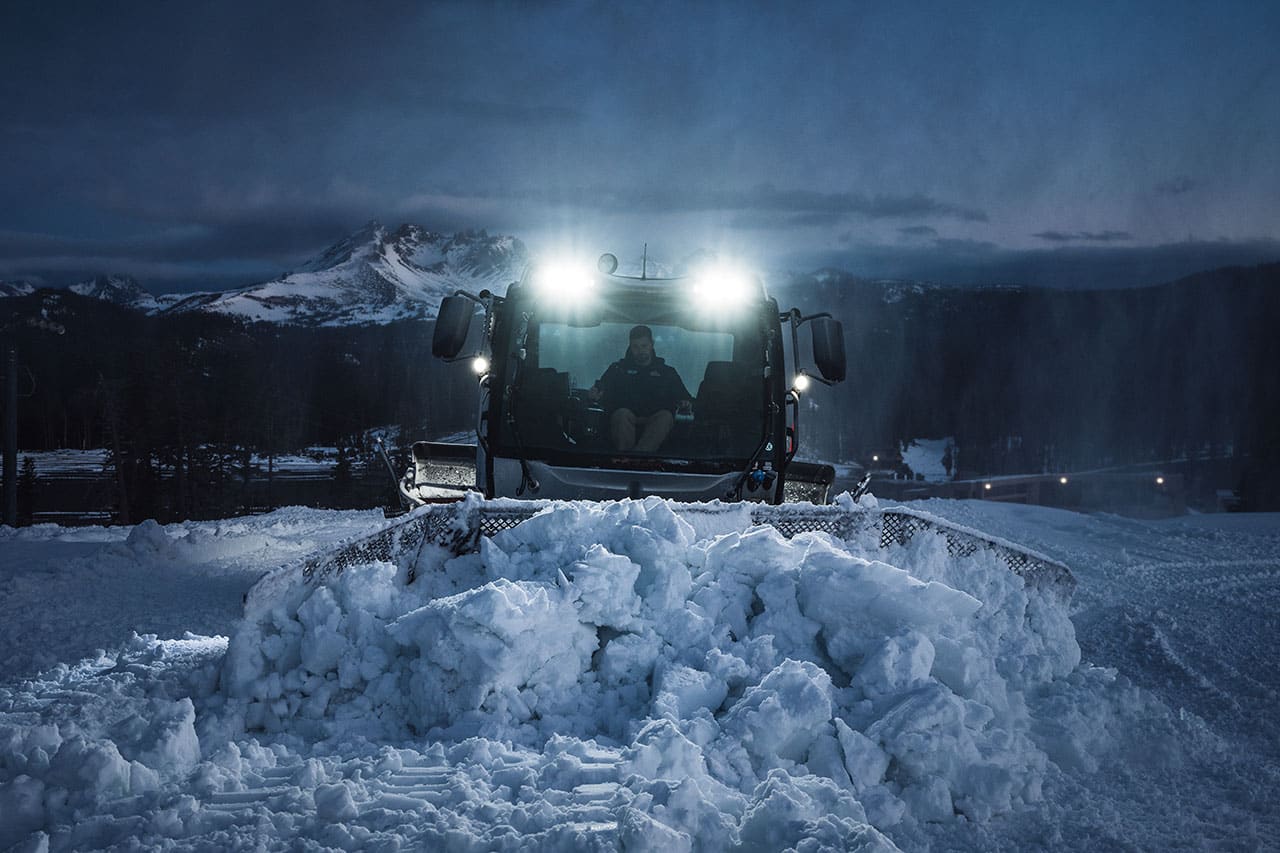
The Power Couple
Every time you hop on a Mt. Bachelor chairlift, offer thanks to Alicia Smith and her husband, Brandon. Waking up at 2:45 a.m. each day, the power couple drives to the mountain long before the plows fire up to make sure the lifts are ready to go—all before most of us are even thinking about getting out of bed. Together, they and their teams strengthen the backbone of what carries us up the mountain.
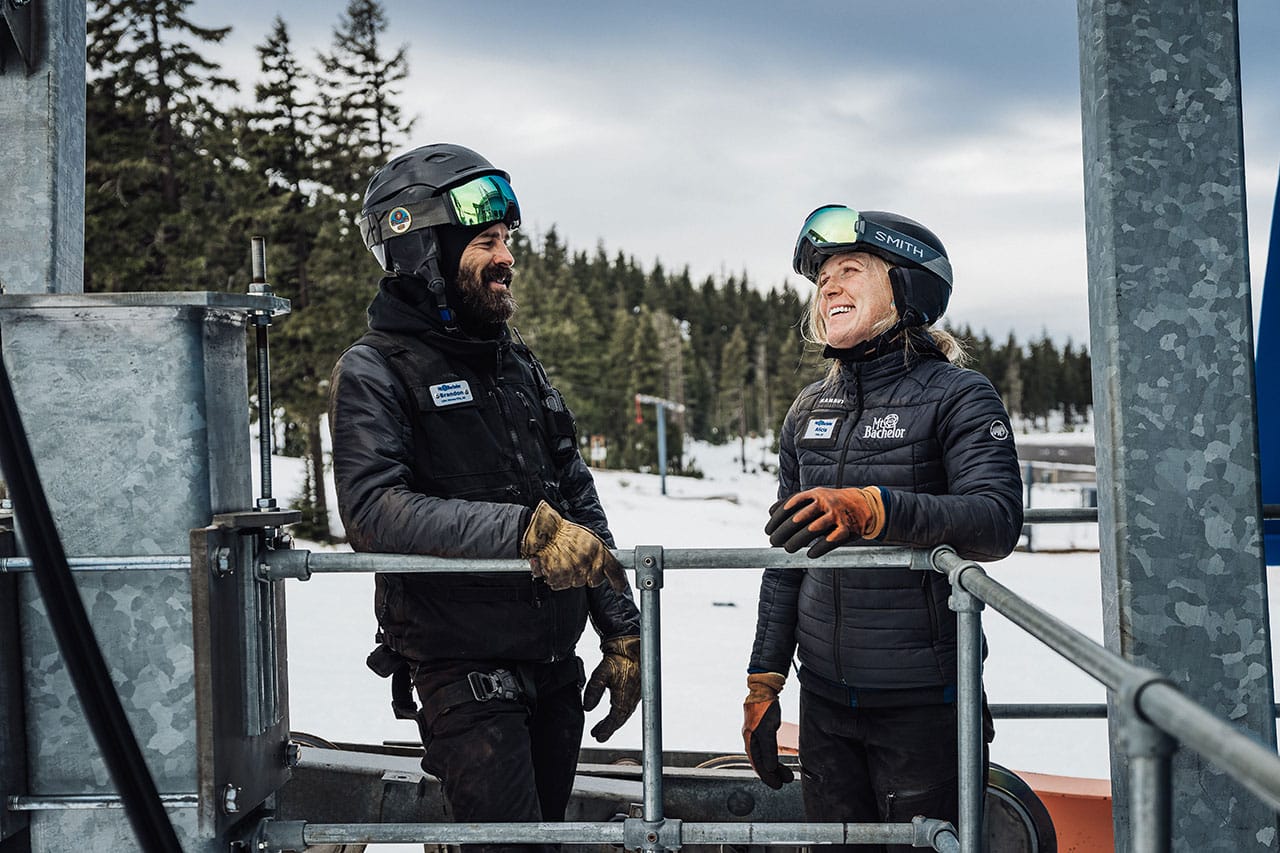
The Smiths started working at Mt. Bachelor almost 20 years ago as lift operators. But in the years since, they’ve moved into different roles. Brandon is now the mountain’s senior lift maintenance manager and Alicia, who helped install Cloudchaser, is the resort’s life maintenance electrical supervisor for anything under 600 volts, which includes every lift, some of which can produce up to 1,000 horsepower.
Everyday, the team inspects 1248 chairs & 20 miles of cable across 195 towers.
Mount Bachelor’s weather makes things tricky, particularly with ice that can build up on the sheaves. It’s imperative that they spin freely to prevent the cables from damaging them. To clear them, the team will run the lift backwards for a bit to knock off much of the ice without breaking tower sensors which make sure the cables stay in their tracks. Team members will then ski or snowmobile down the lift lines, inspecting each one of the sheaves. If one isn’t spinning, someone will climb up the tower and free it by hand. It can take days during a storm cycle to get them all spinning properly. Summit Express actually rotates constantly at a slow rate, even during the night, to help prevent ice build-up and allow for a quicker opening. Other teams work to clear snow from the terminal stations, making sure all the belts and pulleys are ice-free. There are more than 2,100 belts alone. Many of them have to be cleared by hand.
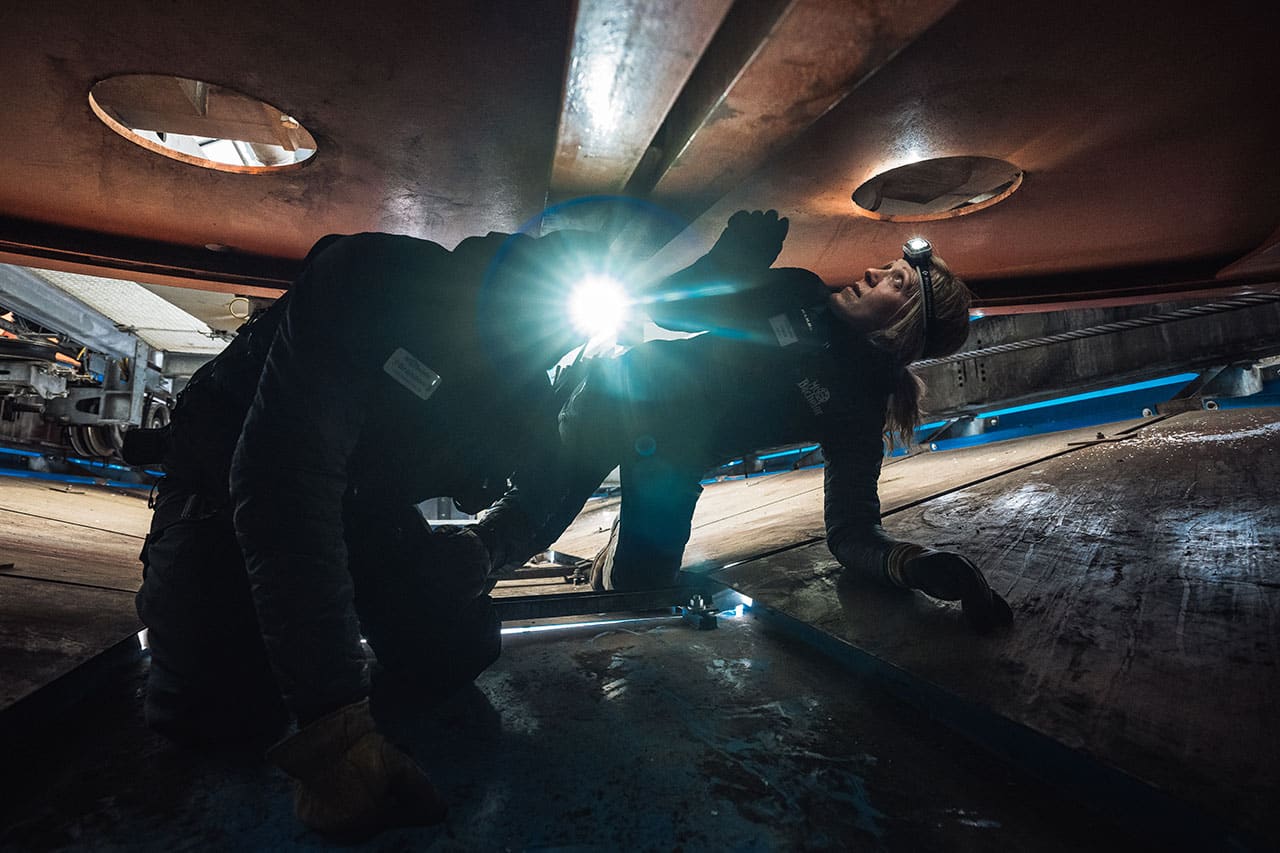

Meanwhile, Alicia will go around making sure the lift controls are all functioning. Ice can get into those, too, and cause the contacts to fail, which means she has to swap out a lot of switches. Those are easy, Alicia said. The worst is when a communication cable breaks. The cables run top to bottom on every tower, and sometimes right along the ground, because burying cables in volcanic rock is challenging. “They get eaten up,” Alicia explained. When a circuit fails, she has to go find the weak spot in the cable, which can be buried under a winter’s worth of snow. “It can take hours, or even days,” she said. One of the most difficult things she’s ever had to deal with was a time when the Northwest Express motor failed. She’d had it “totally dialed in” as one season came to a close, only to discover something that happened over the summer fried it. “The motor had literally pulled itself apart,” she said. It was too late to buy a new one for the season, and most companies won’t rebuild a motor like that for liability reasons.
Eventually, she did find someone willing to take it on, and now the motor functions like it’s brand new. This year, Alicia has some other challenges to look forward to, namely the new Skyliner Express lift which runs on AC power, just like a home appliance. All of the other lifts run on DC, like most battery-powered devices. The control systems are wildly different, with small “programmable logic controller” cards that replace the thousands of relays and switches. “With the older lifts, I can walk up to them and physically change whatever is wrong,” she said. “Now, it’s more about reading lights and figuring out what they mean.”
Evening comes. The Smiths pile into their Ford F-150 and head home to feed the dogs, eat and wash up. By 8 p.m. they’re fast asleep.
The Wizard of Mt. Bachelor
For the past 24 seasons, Betsy Norsen has been an integral part of Mt. Bachelor, first as a ski patroller and now as senior mountain operations manager. That means she oversees all of the grooming, terrain parks and various maintenance teams. “It’s all encompassing,” she said. “There’s always something that needs to be done.” Norsen is typically on the road up to the mountain by 6 a.m., listening to radio chatter on her Motorola from the maintenance and grooming crews that have been working all night. She gets weather reports specific to Mt. Bachelor, and right away she can tell if it’s going to be a difficult start to the day—say, winds are high or lifts are frozen—or if it’s going to be “a turnkey” kind of morning.

Summit Express rotates constantly, even during the night, to prevent ice buildup.
Norsen was once at the top of Sunrise Express when winds hit 100 mph, which means the lifts couldn’t run at all because they’ll slam into or even miss “the trumpet,” a rail that guides the chair into the station. Many times, it’s a game to figure out how to open what they can as safely and efficiently as possible. Pine Marten Express has 102 chairs—Northwest has 180—and if the radio chatter suggests the crews are stopping the lift to clear each one, she may have to pull people off one job and send them out to another to help. “There are a lot of puzzle pieces,” she said. By 6:30 a.m., the first snow reports and conditions updates will be posted online. By 7:30 a.m., she’ll have a better idea of which lifts will open and when. At 2 p.m., she’ll meet with the marketing team and operations teams to see if there were any surprises and what they can learn from that day. “We’ll come up with a plan for the next day and hope the stars align,” she said. “Then, when all of the guests go home, another whole world begins.”
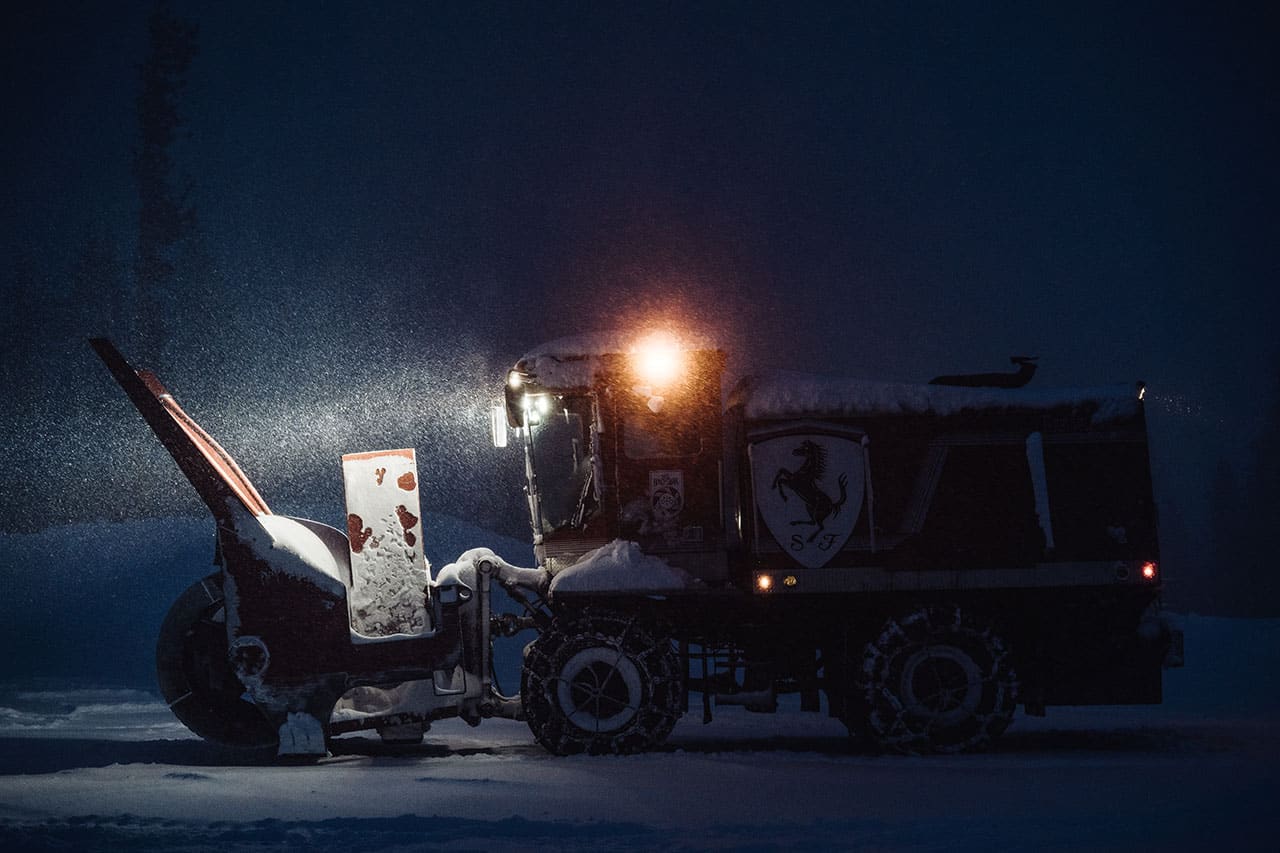
Time to Clear the Lots
As the director of base operations, Ryan Gage—just “Gage,” to his friends—is in charge of a lot of what skiers first encounter when they arrive at the mountain, namely making sure the parking lots are clear, among his long list of other duties. Gage will start touching base with his team daily at around 4 a.m. All through the night, crews have been working to groom the slopes, restock the lodges, distribute parts and mail, haul out the trash, and make sure no one staying in the RV areas needs help.
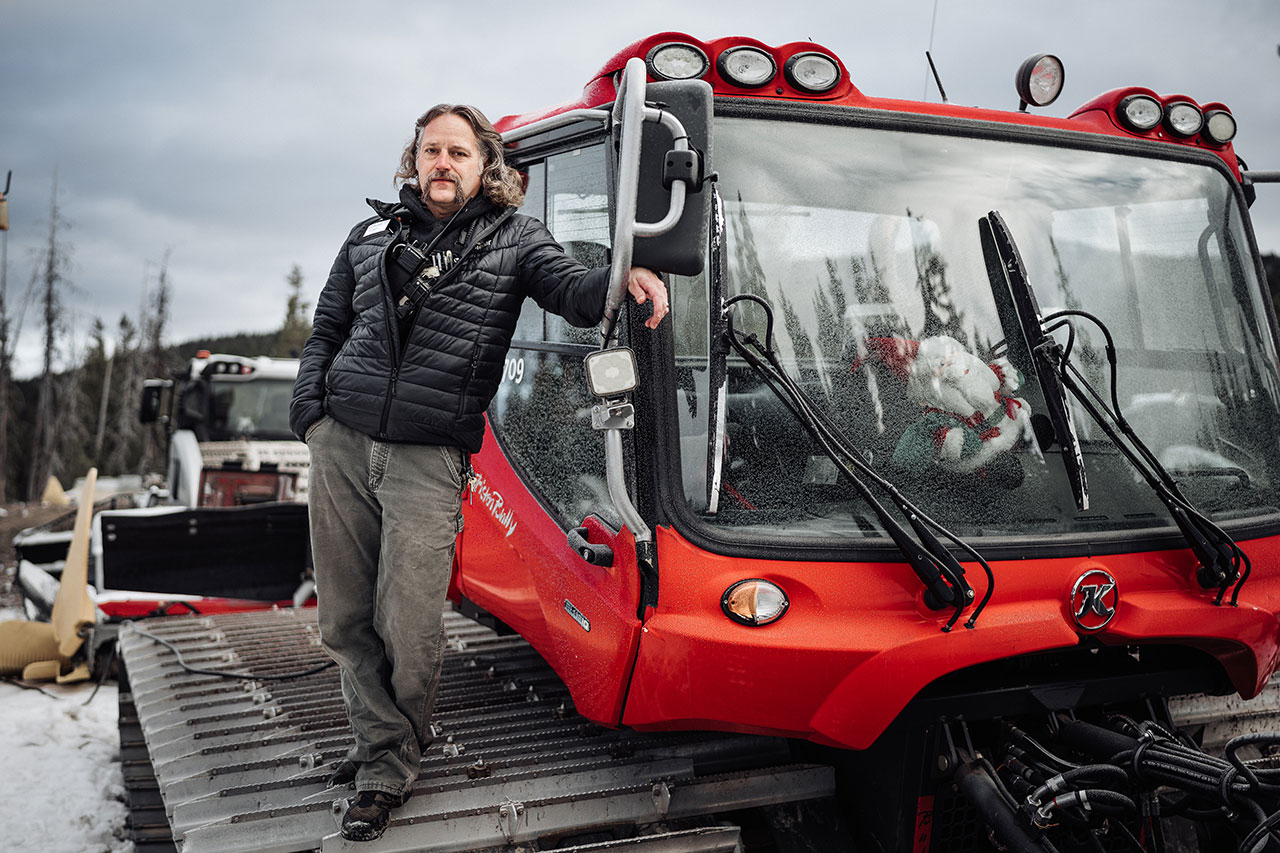
Keeping the West Village parking area clear, however, is a gargantuan task alone. The lot covers 20.8 acres, which means that even a two-inch storm leaves roughly 158,000 cubic feet of snow to push around (enough to bury your average driveway in at least 80 feet of the stuff). In all, Gage will have six or seven operators working the rotary snow blowers, the loader, the plow trucks, and the grader, to clear the four lots at Sunrise, the Skyliner lot, West Village, and all of the service roads while the rest of us are sleeping. “They have to touch every parking lot and every roadway, every night,” he said. “They’re a very busy crew.” To do that work, Gage goes through a massive amount of diesel fuel. One blower working one shift can burn through 400 gallons of it. On a big storm night, it can be even more than that. Oftentimes, the plow or grader can only make a few passes before the snow gets too deep to move and a blower will have to come in to throw it farther out of the way. It’s a never-ending cycle. “The way snow works, the more you touch it, the more air you take out of it and the denser it gets,” Gage said. “It just slows everything down.”
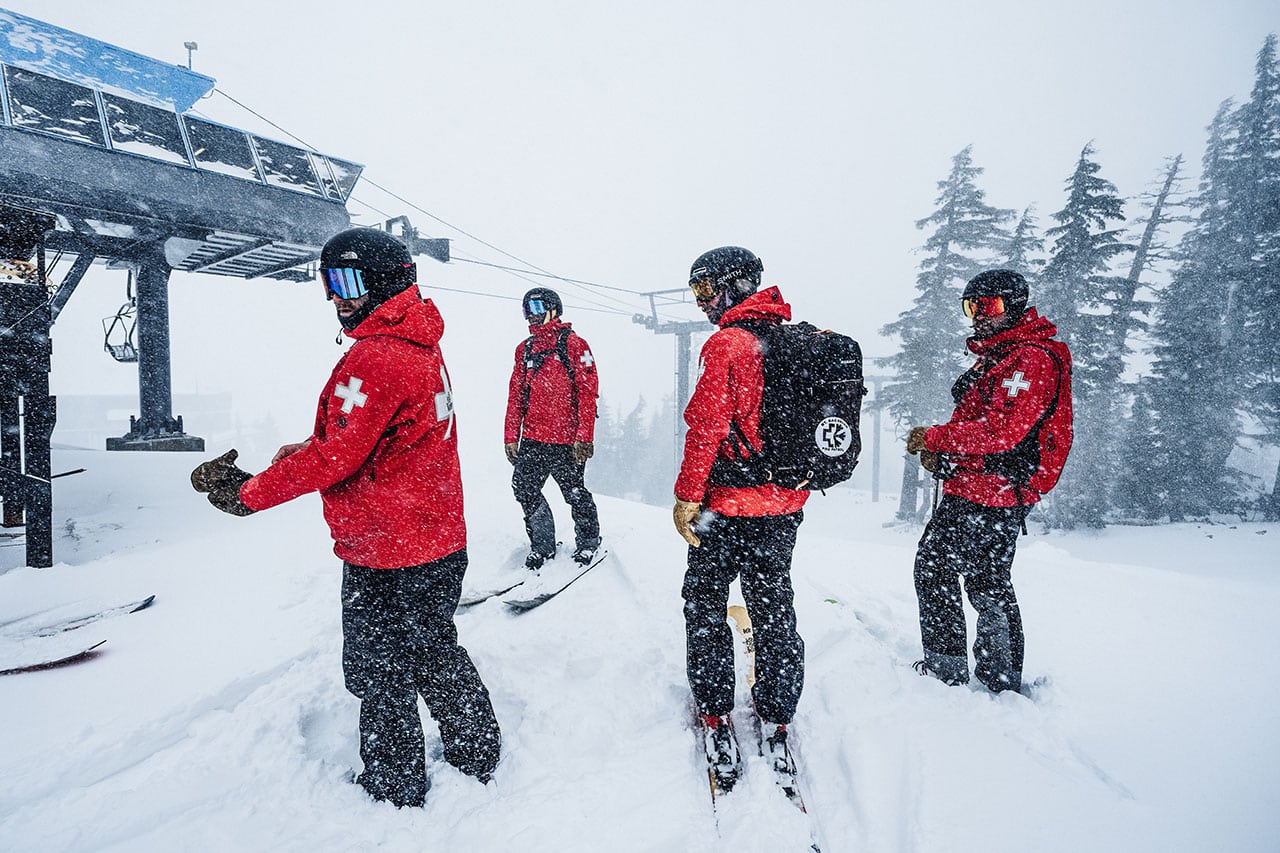
Preparing for the Party
It’s shortly before 5 a.m. and Dave “DT” Thomas silences his alarm. He makes coffee, then checks the webcams and weather. As Mt. Bachelor’s Ski Patrol director, Thomas faces a similar challenge every morning: to figure out the mountain’s “operational footprint.” Is the plan to get Northwest Express open? Is there a race on Cliffhanger that day? Knowing those facts will dictate a lot of the morning. Most of the patrollers arrive by 7:30 a.m. and are on the mountain by 8. Together, they’ll get to work setting up signage and fencing and stringing up the ropes. “It’s like setting the table for a party,” Thomas said.
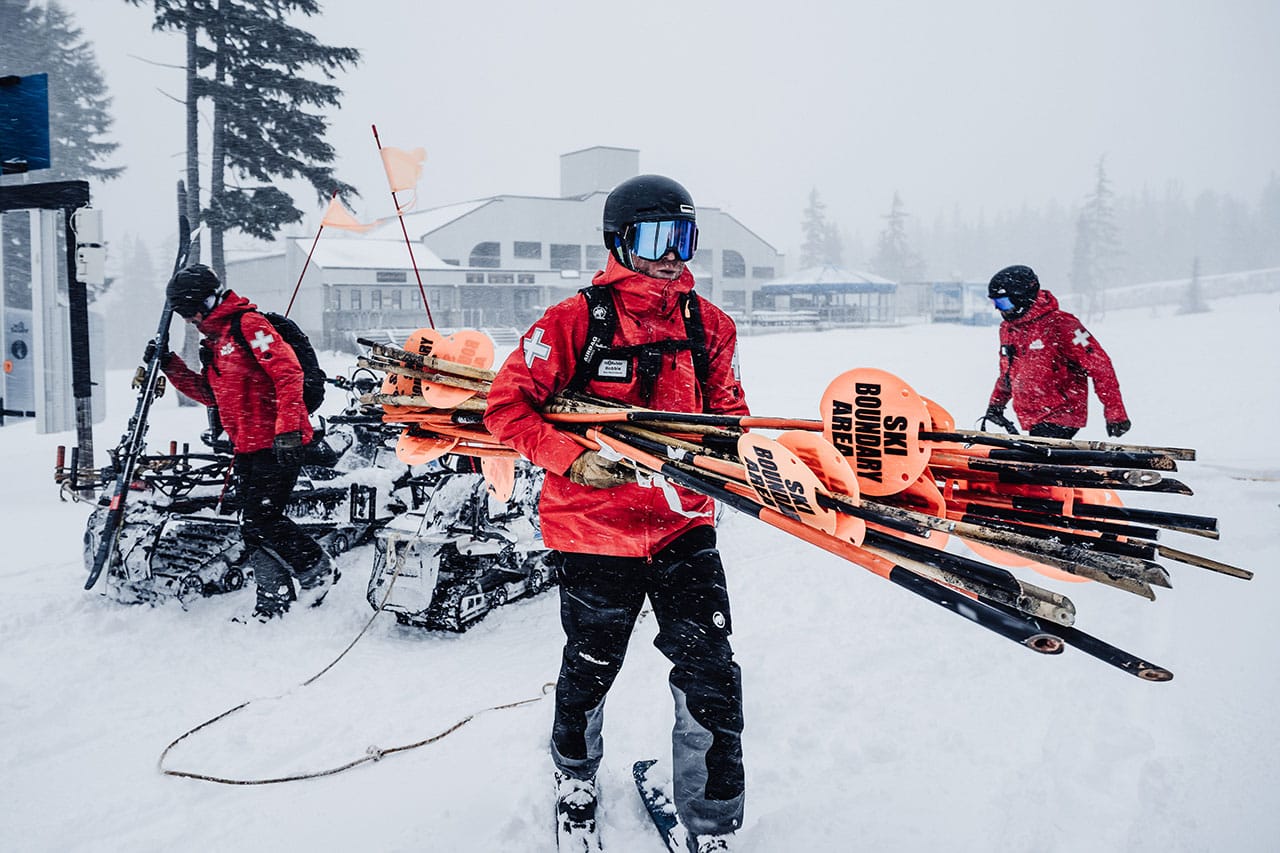
Every patroller has medical training, but before the day begins, they’re more focused on the mountain itself. Avalanche work gets a lot of attention. The avalanche teams will show up around 6 a.m. to get a jump on the snow-safety checks. Since patrollers are on the mountain every single day, they have a good sense of the conditions and which areas might slide. Several “indicator” slopes offer a snapshot of what could be going on up high, too. For instance, there’s an area they call Old Downhill near the top of Skyliner Express that can get a cornice on it that may need to be destroyed, lest it collapse and hurt someone.
Avalanche Work at Mt. Bachelor
Up high, teams of two will venture out into the cirque carrying explosives—typically a two-pound emulsion mixture—while wearing float bags and avalanche beacons, just in case they get caught in a slide themselves. One person will ignite the charge by drawing a wire coated with red phosphorus through a cardboard tube that lights the 90-second fuse, a tricky task if your gloves are frozen. Another patroller ties a length of rope to the charge so it can be raised and lowered on the slope to the exact spot. The charge ignites. Everyone in the parking lot looks up. It’s going to be a good day.

Catch extended interviews with the team at Mt. Bachelor. Listen to The Circling Podcast at BendMagazine.com/podcast.





